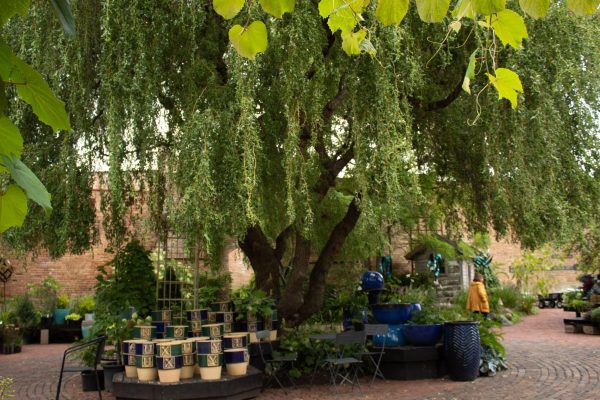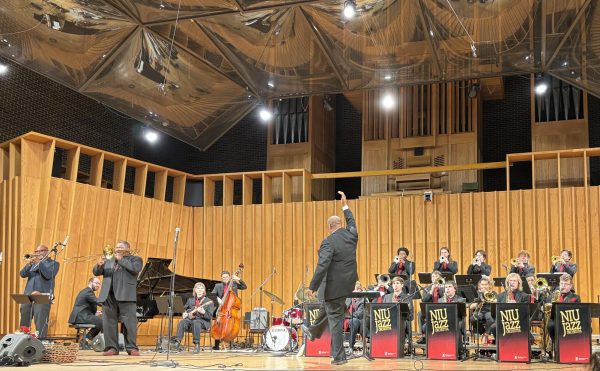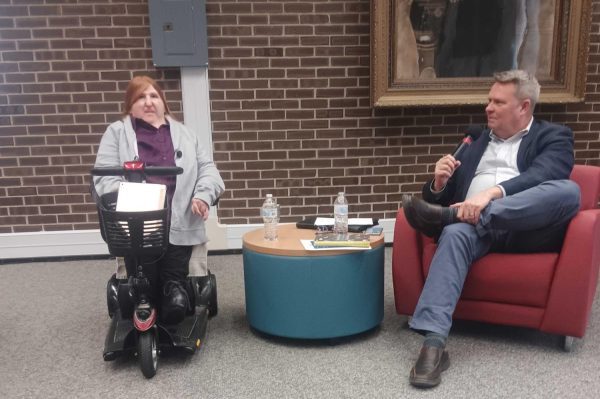Museum furthers introspection
September 28, 2006
The original full-sized cast of Rodin’s “Thinker” sits alone atop a stone pedestal, towering over Paris from a cold and solid stoop.
When one stands under “The Thinker,” it towers over everything. It is one of the only works in the garden surrounding the Rodin Museum that one cannot get right on top of. It seems distanced from the whole world.
“The Thinker” is isolated, contemplating Paris like a patron saint of thought, day and night, with or without museum-goers. But there is a lot to learn from “The Thinker” beside the formal qualities one learns in school like technical skill, philosophical merit and historical significance. Or so I find myself believing.
I believe in a very personal interpretation to art — the kind that allows one to look at any piece and feel what it makes them feel, right or wrong. What most artists want more than anything is a response, and I have very little else to give them.
This is important as I walk the gilded halls of the Louvre and see 5,000 years of art stream past — every artist unaware of who I am and what my response to their work will be. I have to look at an Egyptian statue, that was very relevant to an Egyptian of the time, and make it mean something to me. Or what else does all this art together in one city mean?
This is important as I stand under “The Thinker,” and not see just molded bronze crafted in the shape of a human. I stand under it afraid and riveted. I look up into the dark, distanced eyes. I see the nakedness and anguish, the isolation, the anticipation of fruition and the modern life streaming by him as he sits and concentrates alone, mysterious and very much above us.
It’s frightening to think that this is what thinking is, what it does to people and how it contorts the human body. It is frightening to think someone devoted their life to the thinking and making of these artworks, yet I can peruse them in an afternoon before deciding to bake a quiche for dinner.
It’s frightening to think that if I can’t get something out of an artwork that has transfixed the world for almost 100 years, how sensitive could I be to the subtleties of the human hand, the slenderness of a wrist or the depth of a furrowed brow when I come across them in ‘real life?’
More than anything, however, it excites and helps me re-invent how I go about my days in Paris.
Most pieces of art (there are probably millions of them in Paris) depict a single moment — Rodin anguishing hundreds of hours over a single posed figure, one of a million positions of the body, and he made it beautiful and meaningful because it was beautiful and meaningful to him.
He opened up to the world. He let them into his personal beliefs and deepest feelings through his art, cast his mind in bronze and marble for all to partake.
However, I tell myself, there is no reason why not only a giant, bronze statue or a Parisian sunset can be beautiful or meaningful. But also the play of shadows on a stranger’s hand or the design of a chalkboard that looks abstract after a three-hour class.
There’s some deep exuberance in the “moment” in art museums. I think the art would be meaningless if those moments were only isolated to the art museums and artists within themselves.
“The Thinker” is not the only thinker one sees in a lifetime. He’s the one we all see everyday, all the time. And it’s gratifying to think sometimes we are him — being art, therefore we think.
au revoir,
David Rauch










